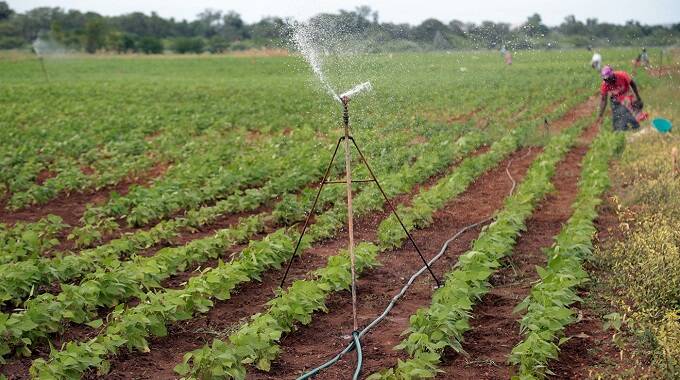
The Sunday Mail

Ian Scoones
IN the last weeks, Zimbabwe, as were Malawi and Zambia, declared a drought emergency, requesting US$2 billion in support to respond to the drought.
The total cereal harvest is expected to be around one million tonnes, about half the quantity of the previous year, leaving a big gap to meet total demand, which means cereal imports will be essential.
We knew this was going to be an El Niño season.
There were early warnings, recommendations to plant drought-resistant crops and suggestions to plan for the worst.
And, unlike many climate predictions where there are more uncertainties, the impacts are well-documented, with close correlations between El Niño events and maize outputs repeatedly seen.
The consequences are now being felt all over the region.
El Niño events are not new.
The major droughts of 1982/1983; 1991/1992; 2009/2010; and 2015/2016, among others, were all linked to El Niño.
El Niño is a naturally occurring phenomenon and emerges when surface temperatures in parts of the Pacific Ocean increase.
This has an impact on global circulation patterns and drought is usually experienced in Southern Africa (while just to the north, in east Africa, El Niño years are unusually wet).
Severe droughts in the past have been retrospectively linked to similar climate anomalies back in the nineteenth century, although today’s accelerating climate change makes things worse.
Food insecurity
This year, through a very uneven season, farmers have gone to great lengths to get a crop.
I do not know how many Western Union transfers I made to pay for yet another round of seed after the last one failed due to another extended mid-season drought.
Cropping results are patchy, depending on luck, timing and local micro-climatic conditions.
Those with access to riverbank or vlei gardens or a small irrigation pump set will fare better.
This is a year when Pfumvudza/Intwasa should have come into its own, with moisture conserved even if rainfall was minimal.
But this again was not guaranteed, and many dug and dug to no avail.
All this is having a huge impact on food security and the World Food Programme reckons there are currently 2,7 million Zimbabweans in need of food, with many more expected in the coming months.
Like El Niño years before, this is going to be a tough period.
Luckily, the previous years have seen good harvests and many have stores of food to help tide them over, especially in resettlement areas, but nevertheless many will be reliant on assistance.
Most of this food will come from relatives who have food or funds, but Government, private sector and international aid support will be important too.
Poor media reporting
The media reporting on the drought is once again disappointing.
This El Niño event is being experienced all across the region; it is not just a Zimbabwean story.
El Niño is a particular, long-established weather event that may become more severe with climate change. However, it is not climate change per se, as so often suggested.
The tired story that Zimbabwe has imported food each year since land reform is simply not true. The falsehoods are found in poorly researched articles, particularly in the foreign media.
The capacity to cope with the situation this year has been improved by land reform. Much of the food currently being distributed to communal areas is coming from resettlement farms.
Much more interesting media stories would focus on how people are managing in spite of the drought; what new networks are being formed to support the needy; and the role of social mobilisation across urban and rural divides amidst this situation.
But these are not story lines for making cheap political points.
Sadly, the quality of rural reporting (and mostly X commentary) in Zimbabwe (with some notable exceptions) is poor, with limited understanding of changing rural dynamics and little attempt to find out what is really happening.
Droughts are always political
The media commentaries emphasise once again that droughts are always political.
Whether it is a government or an international agency, everyone wants to make a point (and raise money) from a drought.
As P. Sainath argued long ago in relation to India, “everybody loves a good drought”.
While rainfall deficits and global weather events take their toll, drought impacts are mediated through economic, social and political relations.
There is, of course, no such thing as a natural disaster, as vulnerabilities always emerge from particular contexts.
The smallholder farmers who got farms during land reform are partially insulated from other problems. Having land to self-provision from, even if yields are low, is vital in generating resilience.
The significant investment in small-scale irrigation in these areas is especially important and will be a major factor in improving food supplies this year.
As we have documented before, land reform farmers, especially in the A1 areas, are the ones who export food and support others, both in communal areas and in towns. The new food economy, particularly in drought periods, remains poorly understood, certainly by journalists, and also by those in international agencies.
Let us hope that, like in previous years, the predicted disaster will not be as bad as feared.
Ian Scoones is a professorial fellow at the Institute of Development Studies and co-director of the STEPS Centre.





